With the NT1 5th Gen, the microphone specialist Rode has put together a solid package that can also be used universally thanks to the combination of XLR and USB connection. Although it has its price at just under 300 euros, it is convincing both in terms of sound and equipment.
Table of contents
- Design, workmanship and price
- Lots of extras
- Built-in technology
- Theoretically, no overdrive is possible
- Sound
- Sometimes a bit too sensitive
- Example recordings: Rode NT1 5th Gen
- Example shots of the competitors
- Conclusion
Design, workmanship and price
With its rather conservative design, the fifth generation of the well-known NT1, which was first presented in 1991, fulfills all the design requirements of a classic studio microphone. The body, which is 190 mm long and 50 mm wide, ends in an angular protective grille, which is somewhat typical for this type of device and protects the actual recording unit.
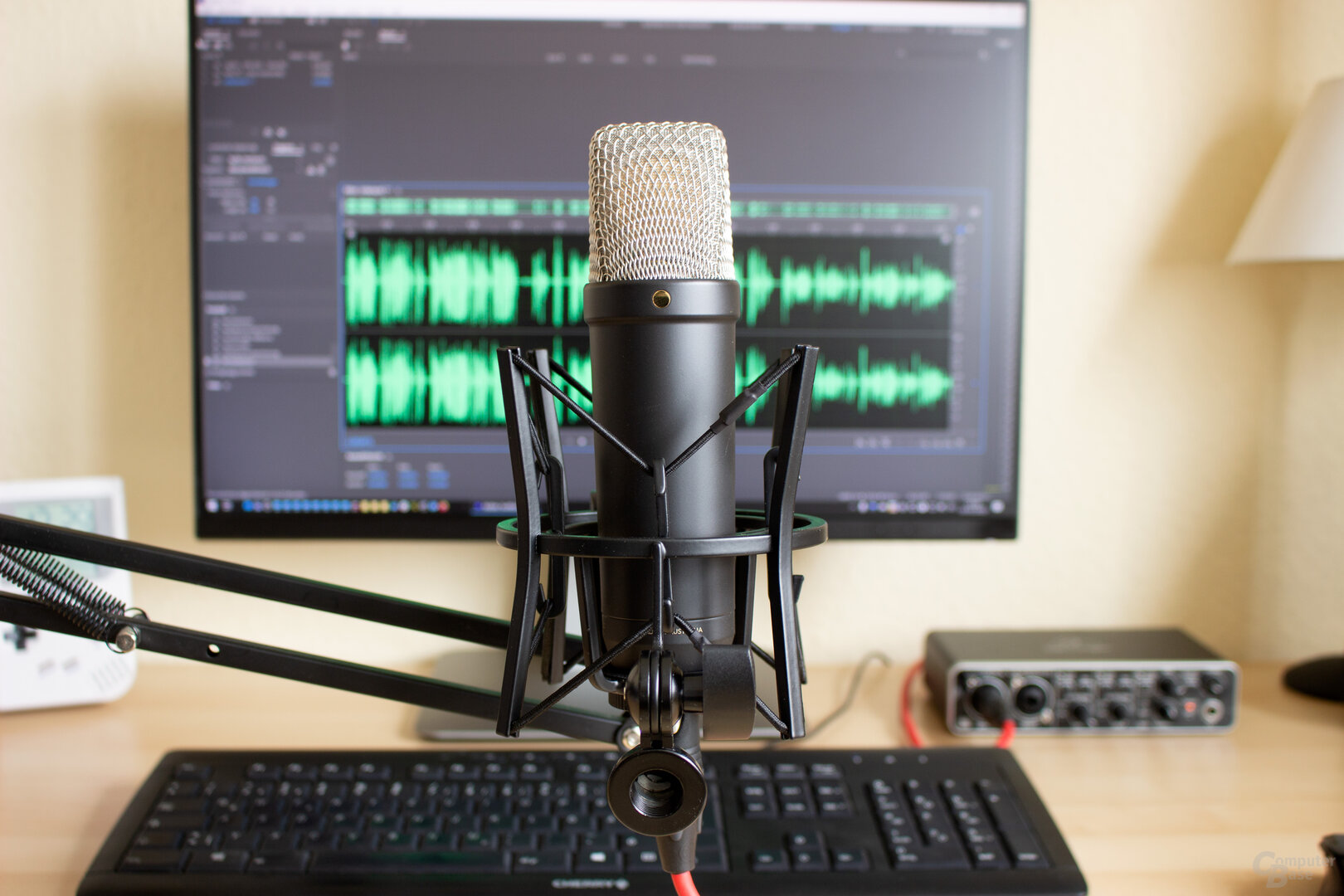 The Rode NT1 5th Gen
The Rode NT1 5th GenThe housing, which is made entirely of scratch-resistant aluminum, gives a high-quality impression and makes the NT1 5th Gen extremely robust, but at 311 g it is not necessarily light either. However, the latter should not really play a role, as the large-diaphragm condenser microphone is designed to remain in a fixed holder rather than to be used in the hand. In general, the workmanship has to be described as impeccable, but you shouldn't expect anything else for an RRP of 299 euros anyway. In addition to the black test device, the model is also available in silver.
As with the NT-USB+ (test), only a small golden dot shows from which side the microphone is picking up the signals. There are no other controls or connections for monitoring via headphones, among other things.
 The underside accommodates both the XLR and the USB connection
The underside accommodates both the XLR and the USB connectionThe NT1 5th Gen is a so-called dual-connect microphone that offers both a classic analogue and a digital connection. These have been implemented in the form of an XLR and USB connector, both of which can be found at the bottom of the microphone and where the USB port has basically been incorporated directly into the analogue interface. However, this can have more disadvantages than advantages: the external appearance is not affected by an additional connection, but there is no space for thicker USB plugs and there is also the risk that the connections for bend the XLR cable. A spatially separate implementation would have been the much better choice.
 It could get tight for some USB plugs on the NT1 5th
It could get tight for some USB plugs on the NT1 5thLots of extras
When it comes to accessories, Rode is very generous: the contents of the package are adorned with a massive metal spider, with which the microphone can be decoupled out of the box and protected from vibrations. The usual thread sizes of 3/8 inch and 5/8 inch are available for connection to a corresponding microphone arm. The microphone is also securely screwed to the spider, which means it can also be used hanging upside down. However, this also means that the new NT1 cannot be used in the delivery state without the included spider. Finding an adapter with the appropriate thread shouldn't be a problem, but it would have to be purchased separately. The professional orientation is also supported by the fact that the microphone does not come with a table stand, even if the USB port suggests mobile use.
 A pop protection for plosives is included
A pop protection for plosives is includedBut the accessories are far from over. For better recordings, the manufacturer includes a classic round pop filter in the package that can be easily screwed onto the decoupling unit. A light fabric cover should also protect the microphone during transport. Rode also supplies cables – and not too short: a 3 m long USB-C and a 6 m long XLR cable in a stable version ensure the necessary connection. If the XLR plug of another cable is too loose in the connection, the manufacturer includes a small rubber ring to tighten the fit.
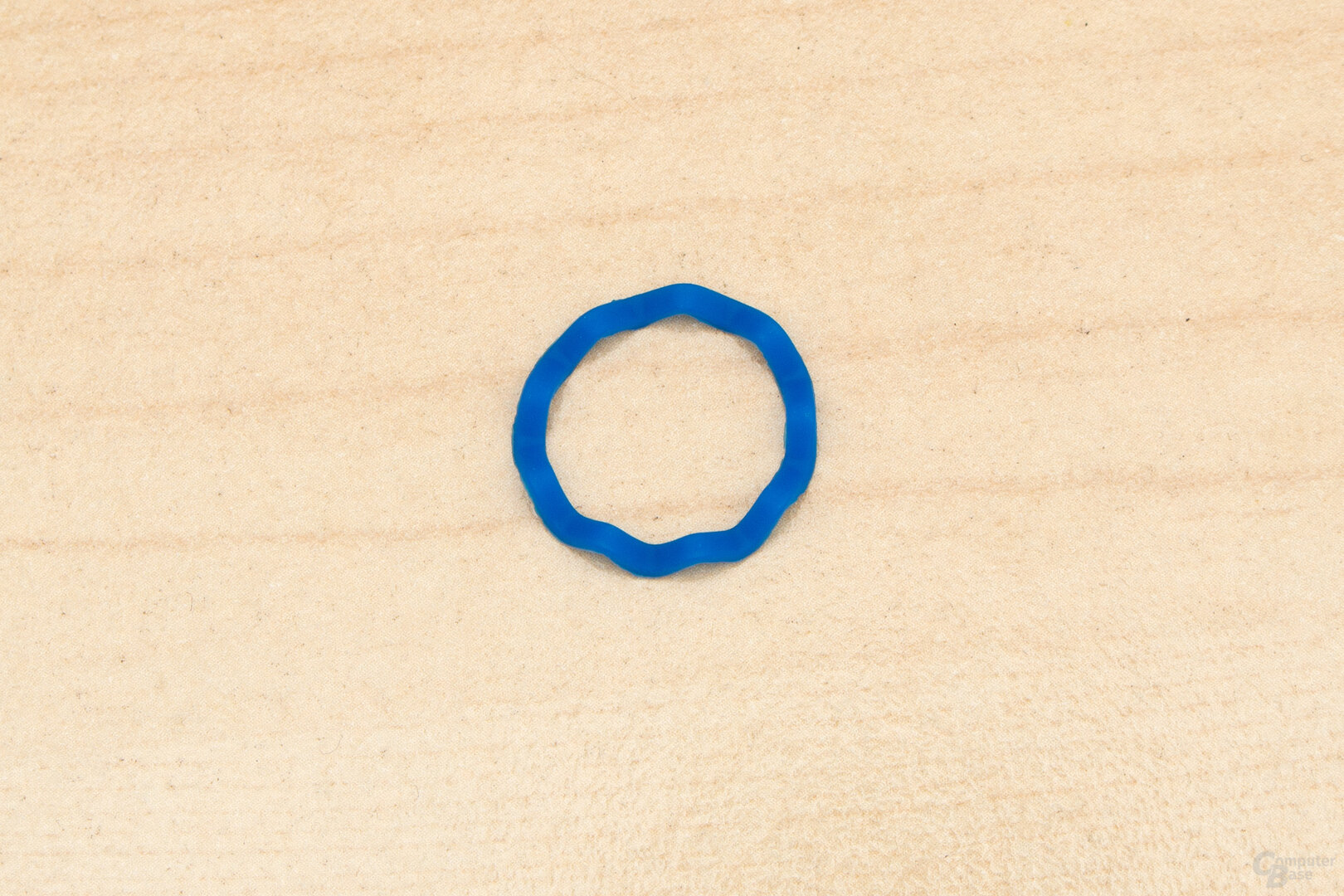 Should the XLR connector be a bit too wobbly seated, Rode adds a rubber ring
Should the XLR connector be a bit too wobbly seated, Rode adds a rubber ringThese circumstances also make the package interesting for beginners – as long as they are not deterred by the price. With all the extras, however, it seems a bit strange that Rode does not supply an adapter to USB A for the cable, which has a USB-C plug on both sides – not every computer or notebook used is so new that it is already installed such a connection. Here, the buyer has to provide an appropriate adapter himself, even if it only costs a few euros.
 Rode puts the microphone both a long USB and a long XLR cable at
Rode puts the microphone both a long USB and a long XLR cable atTechnology installed
With the new NT1, too, Rode is sticking to the 1-inch, gold-coated large-diaphragm capsule. It should ensure a frequency response of 20 Hz to 20 kHz and thus make the microphone a universal device that should cover the range from voice recordings to a variety of classical acoustic instruments such as piano or guitar to drums and percussion. Compared to the original version, the inherent noise has been reduced to 4 dB, which, according to the company, makes it the lowest-noise studio condenser microphone in the world. According to the information, the limit sound pressure level is 142 dB SPL, whereby the corresponding distortion factor is not specified.
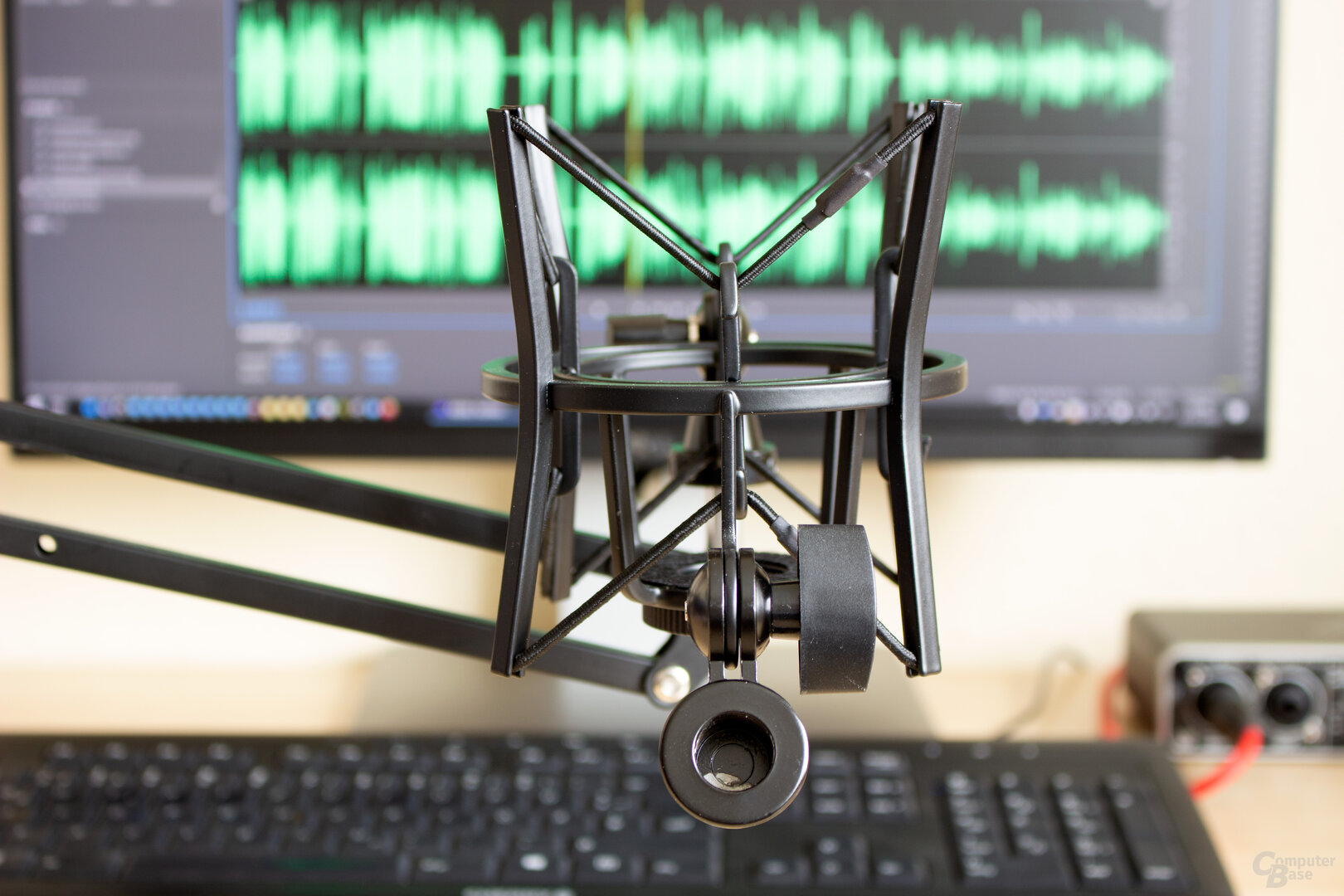 The spider supplied with the Rode NT1 5th Gen is very robust thanks to its metal
The spider supplied with the Rode NT1 5th Gen is very robust thanks to its metalThe NT1 5th Gen uses the cardioid directional characteristic, which is particularly suitable for scenarios in which only one speaker is sitting in front of the microphone. Signals that hit the microphone from the front are primarily processed, while information coming from the sides is largely filtered by the design.
The microphone does not have a mute switch; the way to do this is via the software used, although there is a risk that keystrokes or mouse clicks will be heard.
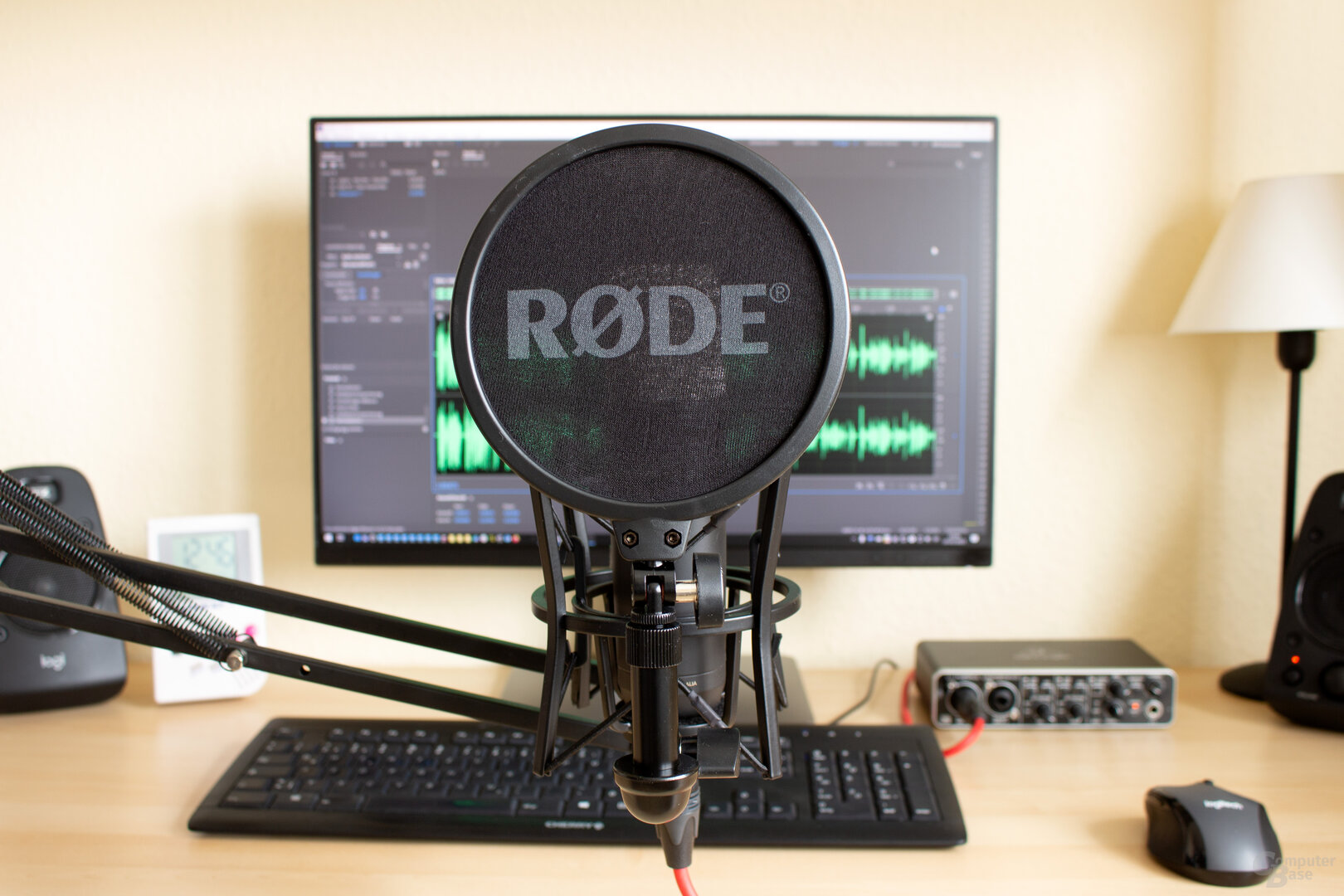 The Rode NT1 5th Gen with pop protection
The Rode NT1 5th Gen with pop protectionTheoretically no override possible
As already mentioned, the NT1 5th Gen is a dual-connect microphone that can be operated analogously as well as digitally. The latter means that the signal must be converted in the sound pickup itself in order to then send it via cable to the computer, notebook or possibly tablet or smartphone. This is done internally in the test candidate with a resolution of 32 bits at a sampling rate of up to 192 kHz. The high resolution should at least mathematically make distortions impossible. Pure normalization in the respective DAW software should be sufficient in the case of incorrect gain settings or digital clipping in order to obtain trouble-free material.
-
 With the Rode Connect application, multiple sources can be easily mixed
With the Rode Connect application, multiple sources can be easily mixed
Image 1 of 3
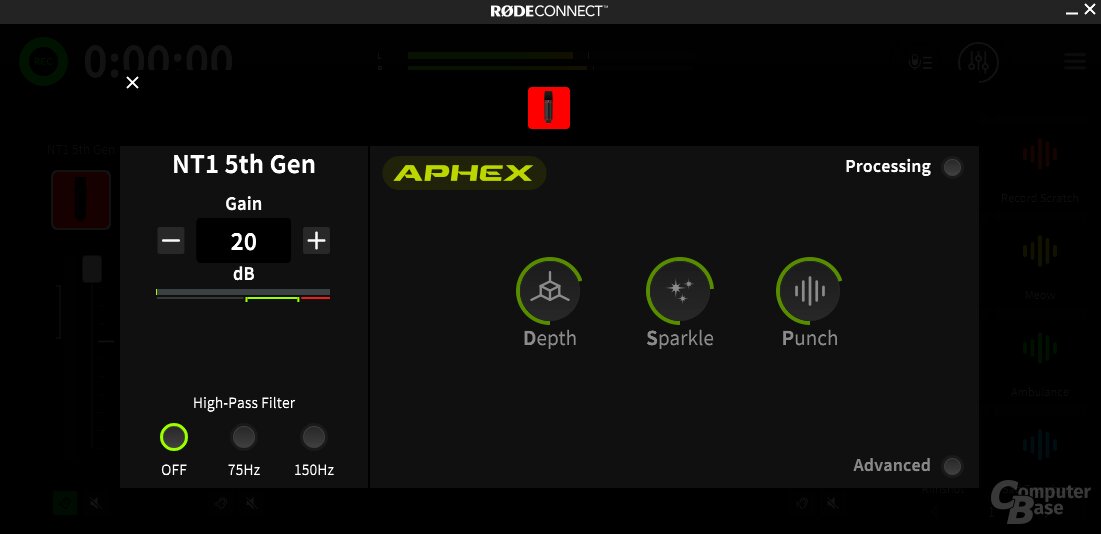 Rode Connect offers some sound optimization features
Rode Connect offers some sound optimization features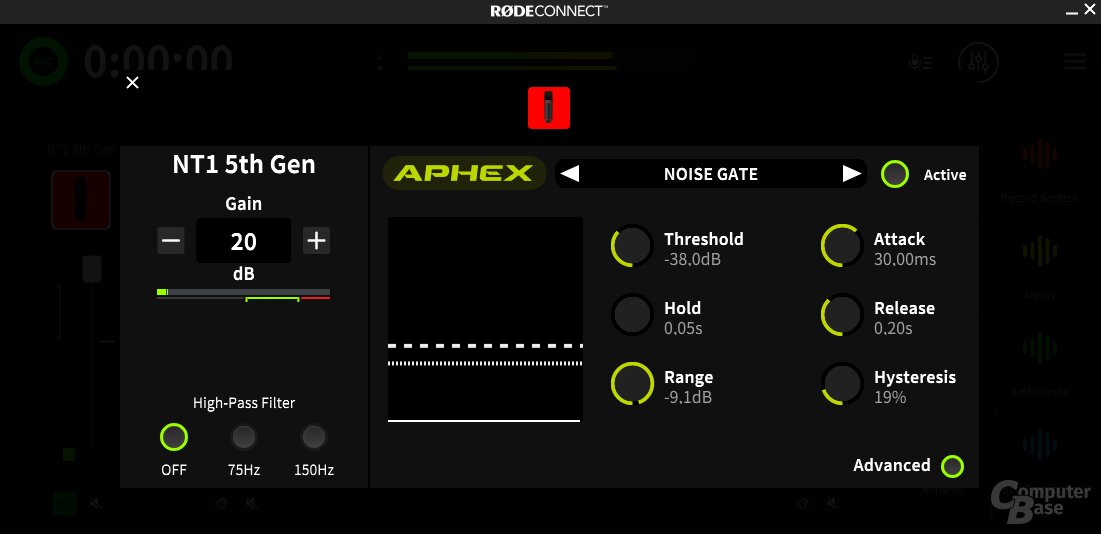 Numerous parameters can be set on the NT1 5th Gen via Rode Connect
Numerous parameters can be set on the NT1 5th Gen via Rode ConnectSince the microphone in this mode only works with the voltage of 5 V that is typical for USB connections, the output level is generally not very high compared to analog use. In order to amplify the signal accordingly, Rode uses its own “Revolution Preamp”, which is intended to enable high-quality signal amplification with low noise again. The signal can be post-processed via the integrated DSP (“Digital Signal Processor”) using the in-house streaming and podcast software “Connect” and assigned various filters, including a low-cut filter and noise suppression, or a compressor become. In addition, the software is suitable for mixing from multiple sources on a smaller scale.
Corresponding functions must be taken over by your own DAW (“Digital Audio Workstation”) for analogue use. In turn, the user is rewarded with a significantly better level, for which a phantom power supply of 48 V is required for the audio interface used.
Sound
In practice, the NT1 5th Gen has a lot to offer both analog and digital. Although the preamp has to be raised quite a bit for a reasonable level when using USB, the quality of both inputs is very similar. On the other hand, the pad function, which lowers the signal by a few decibels, should be used for analogue use because of the phantom power supply for the audio interface. This allows the input volume to be adjusted much better and protected against clipping.
In terms of sound, the test candidate can only just beat the NT-USB+ in the audio samples, especially with the digital output, which is also a little less susceptible to plosive sounds. Those who also value a warmer voice reproduction will also be better served with the new NT1. It sounds a little fuller and less wiry than the representative from the same company, which is significantly cheaper at 210 euros, but also presents a healthy mix of the individual frequency components. The M 90 Pro X from beyerdynamic (test) is in the same league in terms of price and sound, but it reproduces the voice with significantly more high-frequency components. For an equally warm image, this would have to be readjusted. In addition, the microphone mentioned only has an XLR connection and is therefore less flexible.
Somewhat too sensitive
It's no coincidence that Rode includes a pop filter with the set. The test candidate is quite sensitive at short distances of 5 and 10 cm, at which a fuller voice reproduction can be achieved. The microphone can only be spoken to well from a short distance with the filter mentioned. Rode himself does not provide any information about an optimal distance between speaker and microphone.
 NT1 5th Gen as Rode created it
NT1 5th Gen as Rode created itAlthough the risk of the interference mentioned can be counteracted with a greater distance from the sound pickup, the respective room acoustics then also have an ever greater influence on the recorded signal and the respective room reverberation becomes more and more apparent. This should be less of a problem in an appropriately furnished environment, but in normal rooms it can definitely lead to a deterioration in the sound. Here, at least in USB operation, the software-side sound enhancers can be used to help, but even these have their limits.
The test person does not behave particularly conspicuously in terms of background noise and is therefore within the expected range. Low-frequency interference can be more pronounced than is the case with other microphones due to the slightly stronger recording of low tones. But they are still limited. Some of this can be at least contained with appropriate filters, but the lower parts of the voice can also be lost. The situation is different with keyboard or mouse noises: They are audibly more clearly adopted and can make the voice less intelligible.
Sample shots: Rode NT1 5th Gen
Competitor's example recordings
Example recordings: Rode NT-USB+
Recordings for microphone quality with and without noise(s)
Example recordings: beyerdynamic M 90 Pro X
Recordings of microphone quality with and without background noise(s)
Example recordings: beyerdynamic M 70 Pro X
Recordings of the microphone quality with and without background noise(s)
Example recordings: Elgato Wave:3
Microphone quality recordings with and without noise(s)
Sample recordings: Elgato Wave DX
Microphone quality recordings with and without noise(s)
Example footage: Neat King Bee
Microphone quality recordings with and without noise(s)
Sample footage : Neat Worker Bee
Microphone quality recordings with and without noise(s)
Sample recordings: HyperX Procast
Microphone quality recordings with and without noise(s)
Example footage: SPC Gear SM950< /strong>
Microphone quality recordings with and without noise(s)
Conclusion
The new NT1, now in its fifth generation, lives up to its reputation and offers very good voice pickup with high-quality workmanship. The integration of a USB connection can represent a significant gain in terms of flexibility, but the position of the port is chosen rather unfavorably – if the USB cables are too large, the pins for the XLR connection can be affected.
Rode includes a number of accessories with his new microphone: In addition to a metal spider, there is a pop filter and a sufficiently long cable in the packaging. This can also make the NT1 5th Gen a good entry-level package – provided the interested party is willing to pay 299 euros for it over the (virtual) shop counter.
The new representative from Rode also has a lot to offer in terms of sound, as it is supposed to cover a wide spectrum with voice and instrument recordings. The candidate at least masters voice recordings with flying colors in the test, whereby they are reproduced warmly and with all the necessary frequency components. If you want to use the microphone primarily digitally and via USB, you might be better off with the much cheaper NT-USB+, which does not have a spider and is therefore not decoupled from the start. A table stand would have looked just as good with the package, especially when using mobile devices such as smartphones or tablets. If the manufacturer hadn't also considered these scenarios, the USB connection would somehow be unnecessary.
-
The Rode NT1 5th Gen
Image 1 of 14
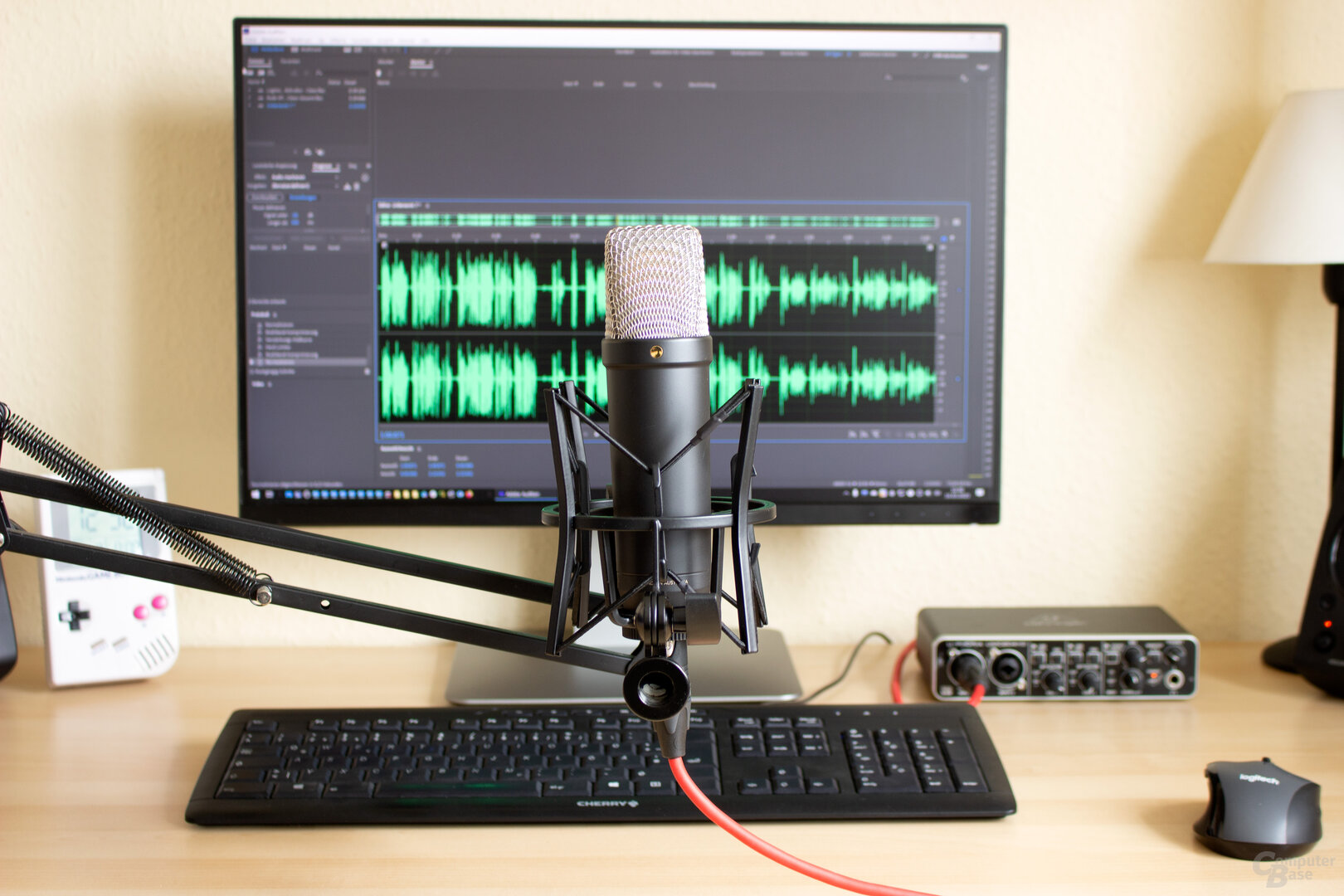 The Rode NT1 5th Gen
The Rode NT1 5th Gen The Rode NT1 5th Gen
The Rode NT1 5th Gen
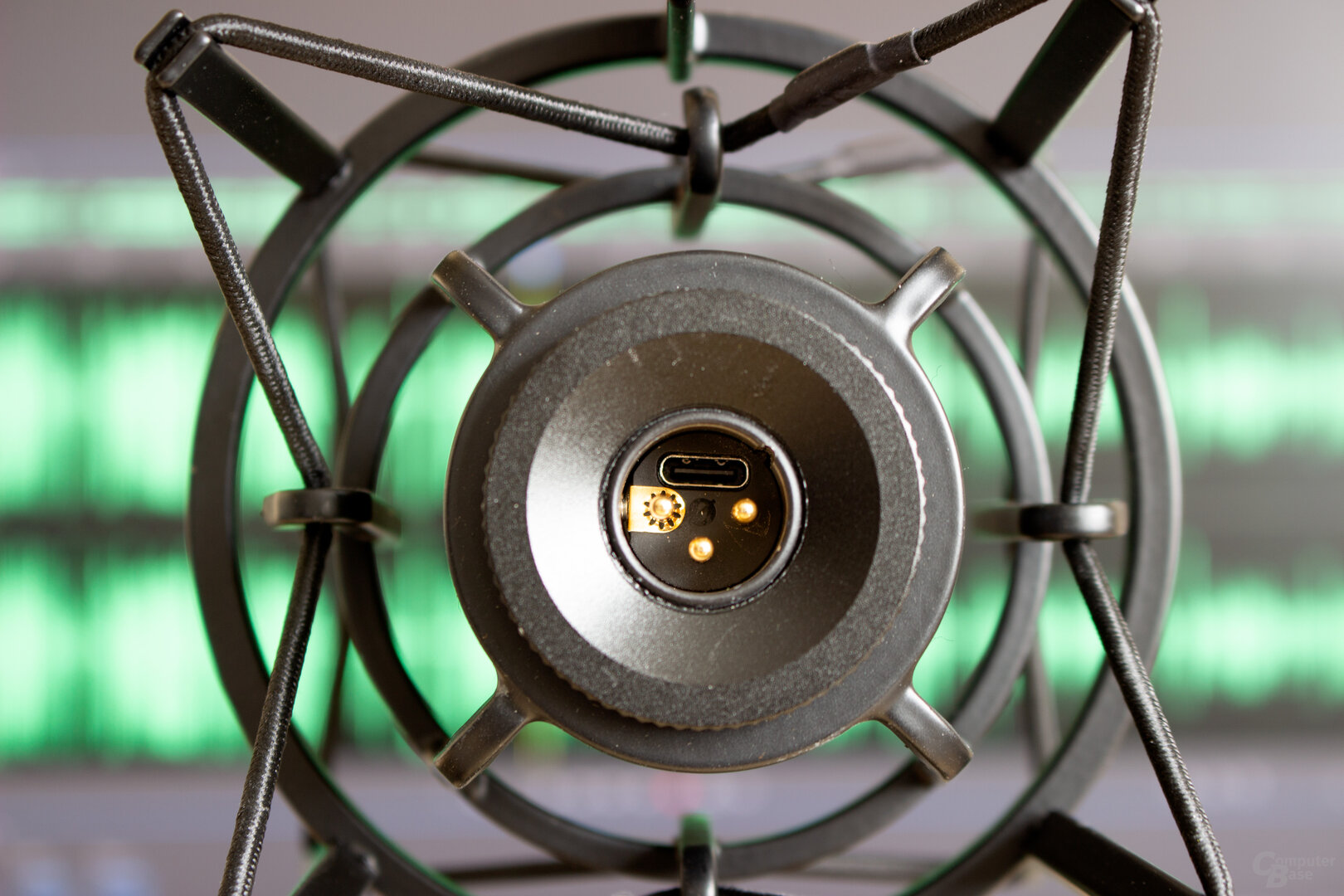 The underside houses both the XLR and USB connectors
The underside houses both the XLR and USB connectors< figure class="thumbs__figure thumbs__figure--has-caption"> 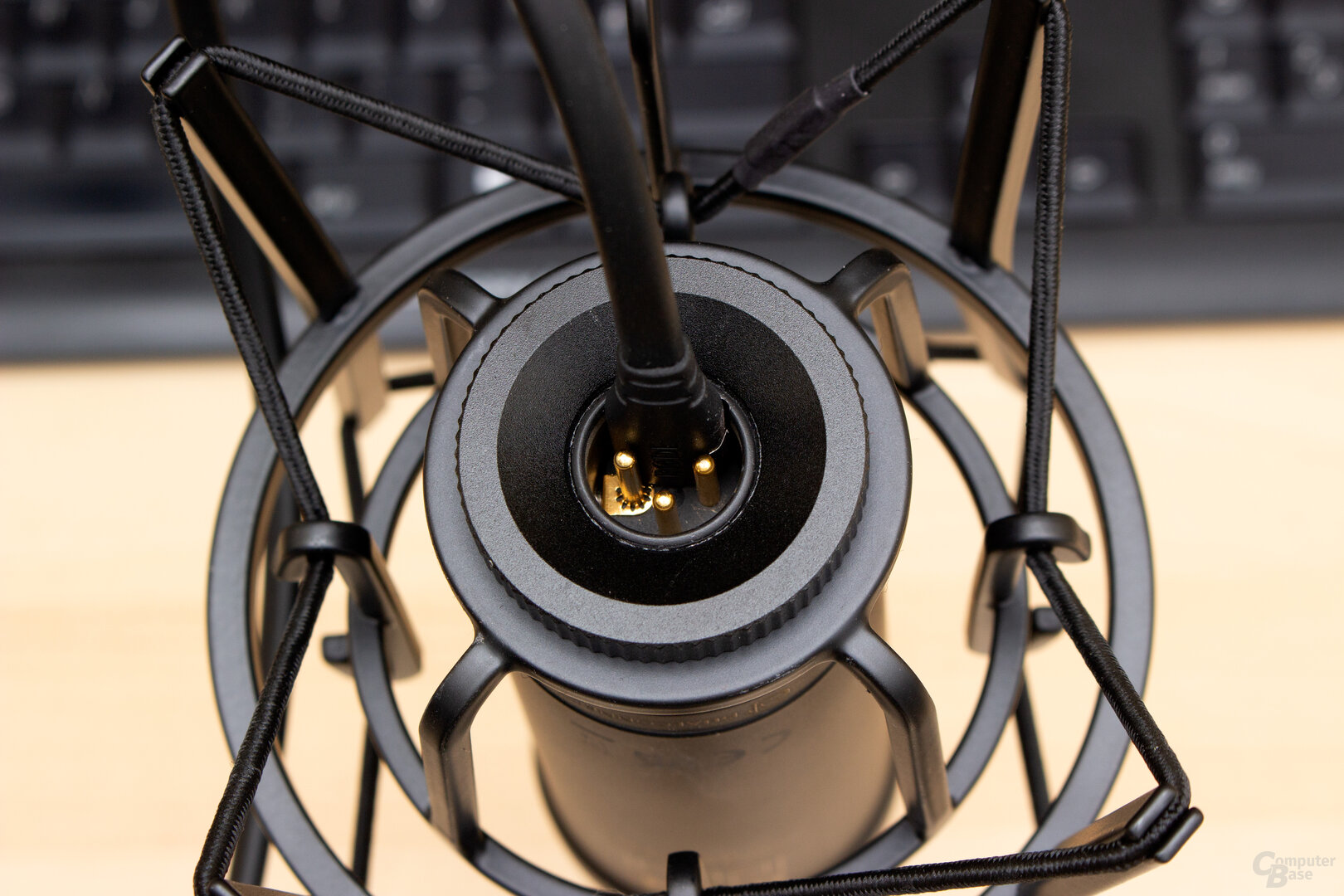 The NT1 5th could get tight for some USB connectors
The NT1 5th could get tight for some USB connectors
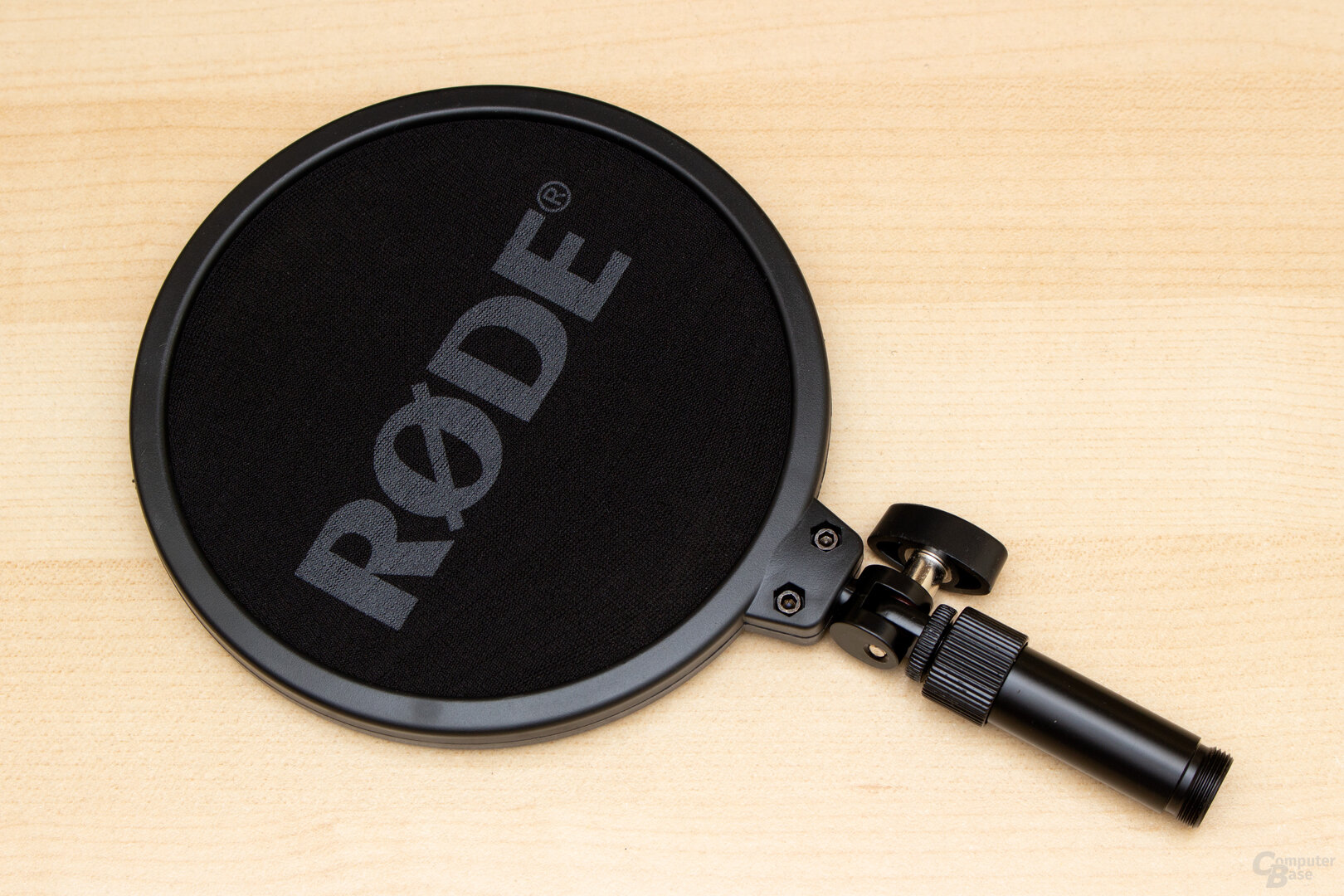 A pop filter for plosives is included
A pop filter for plosives is included The Rode NT1 5th Gen with pop protection
The Rode NT1 5th Gen with pop protection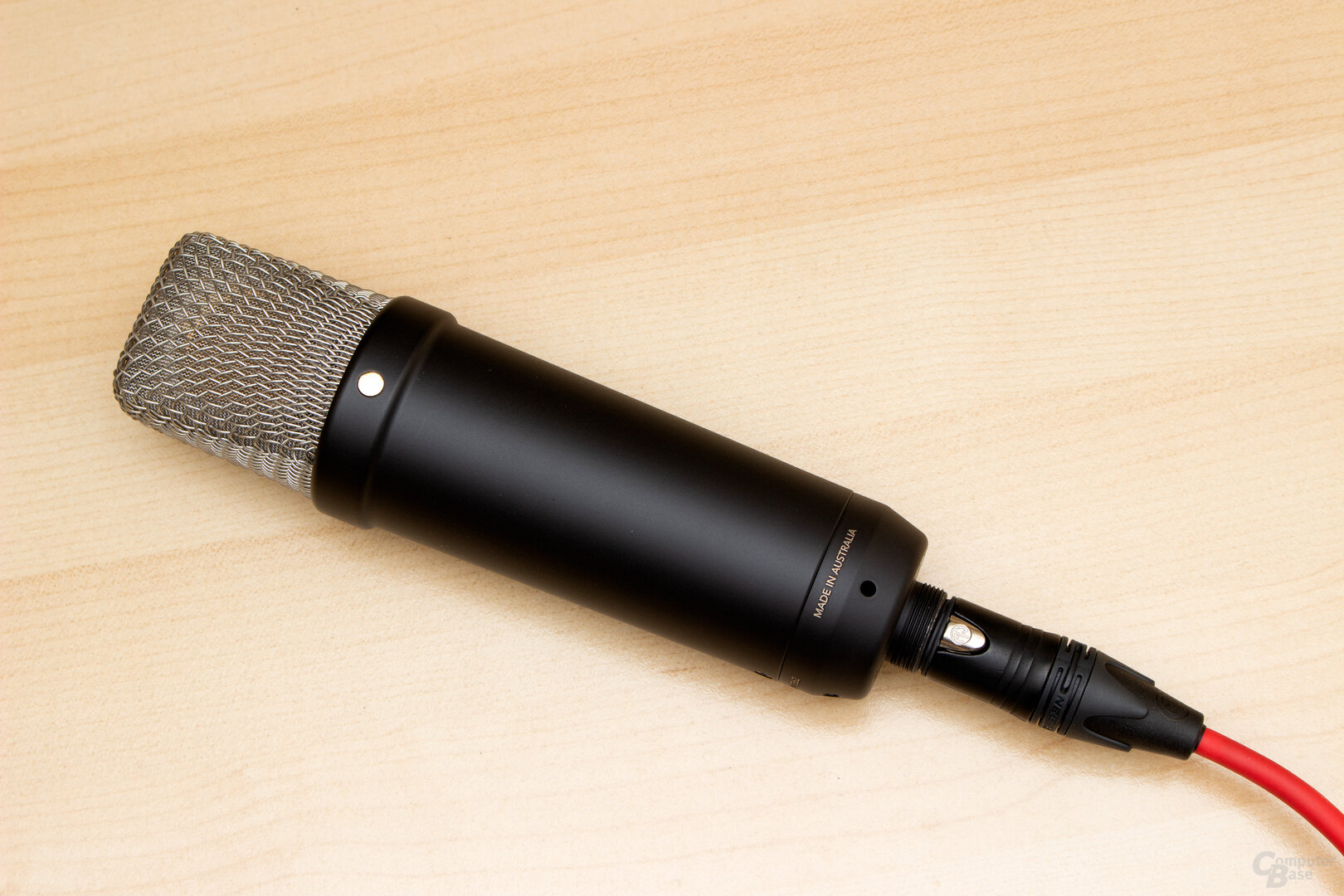 NT1 5th Gen how Rode created it
NT1 5th Gen how Rode created it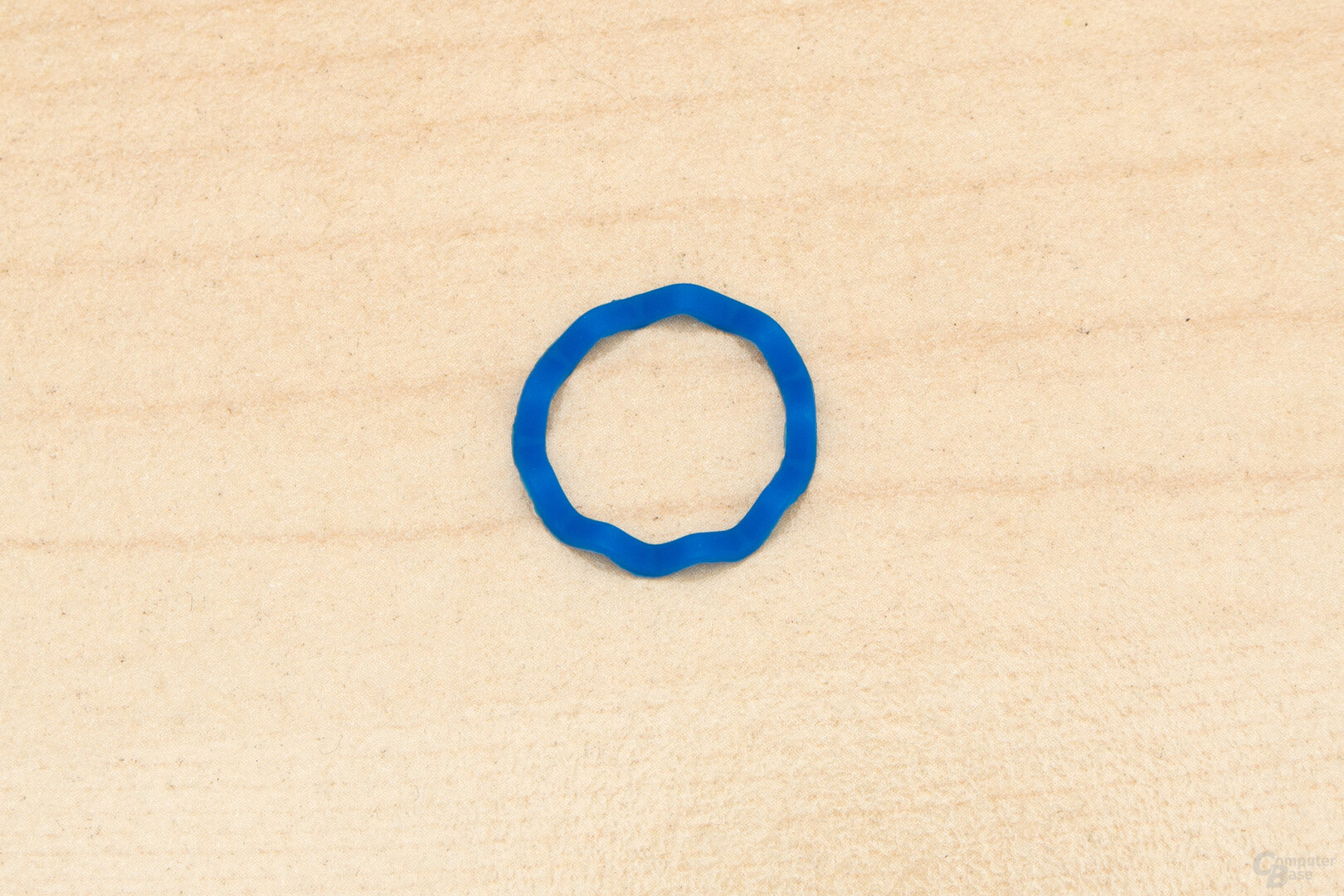 If the XLR connector is a bit too wobbly, Rode will add a rubber ring
If the XLR connector is a bit too wobbly, Rode will add a rubber ring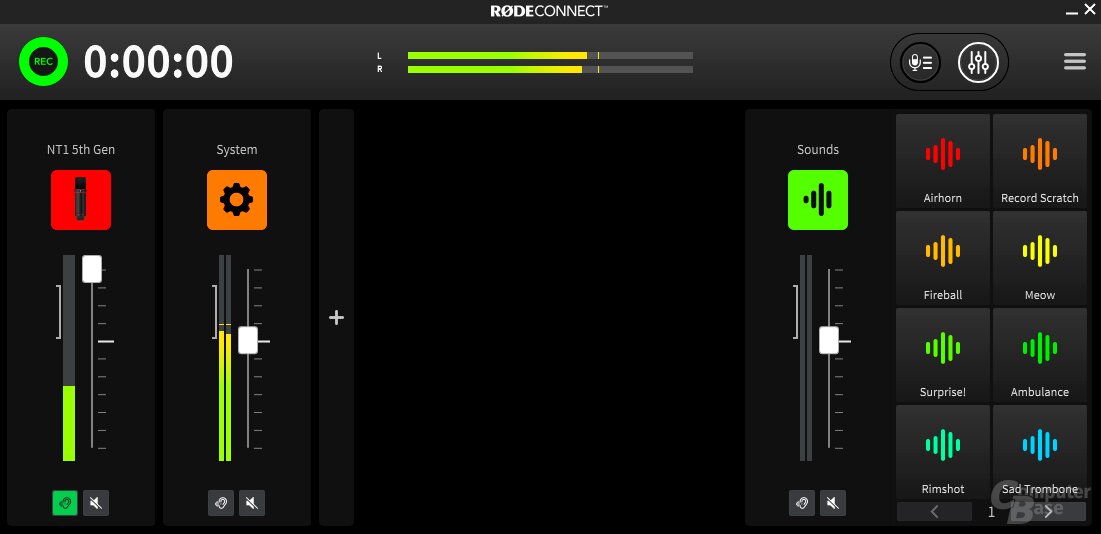 The Rode Connect application makes it easy to mix multiple sources some functions for sound optimization
The Rode Connect application makes it easy to mix multiple sources some functions for sound optimization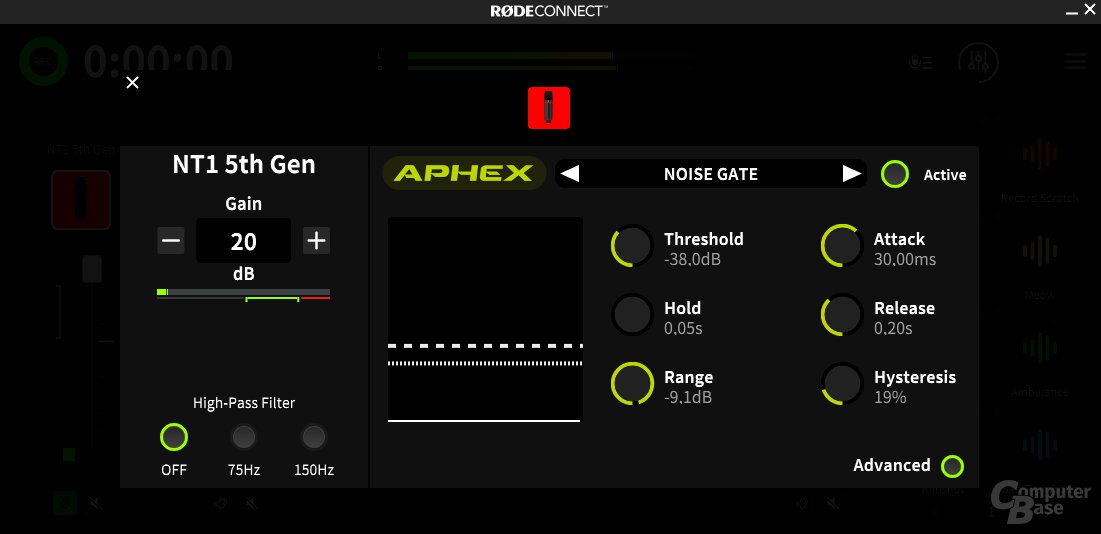 Numerous parameters can be set on the NT1 5th Gen via Rode Connect be set
Numerous parameters can be set on the NT1 5th Gen via Rode Connect be setAt close range, the NT1 5th Gen has to struggle with a few deficits in the form of plosives, which makes the use of a pop filter indispensable, at least if a deeper and warmer voice reproduction is desired. Otherwise, the sound pickup is benevolent towards background noise and behaves like most of its competitors: low-frequency interference is also reproduced, but it can usually be at least partially filtered out. Only high tones, such as keyboard noises, carry more weight.
Despite the small flaws, Rode puts together a convincing package for the NT1 5th Gen in its entirety, which, however, comes at a price of just under 300 euros.
Use a separate one Microphone on the PC (no headset)
- Yes
- No
- Abstain (Show result)
Please log in to vote!
ComputerBase was loaned the NT1 5th Gen by Rode for the test. The manufacturer did not influence the test report and there was no obligation to publish it. There was no NDA.
This article was interesting, helpful or both? The editors are happy about any support from ComputerBase Pro and disabled ad blockers. More about ads on ComputerBase.